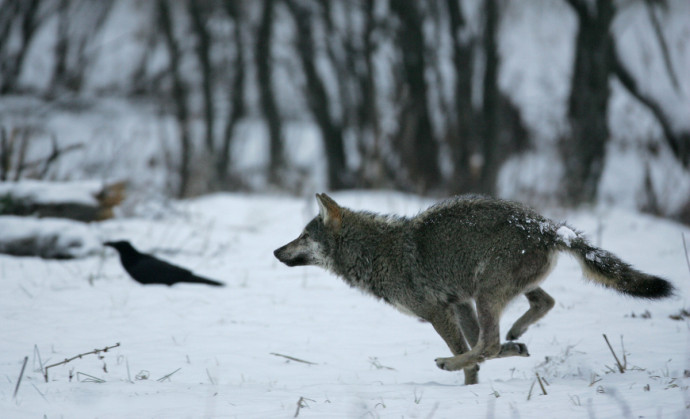Large carnivores are among the most controversial and challenging species to conserve in our modern and crowded world. Despite this, the brown bear, the Eurasian lynx, the gray wolf and the wolverine today all have stable or increasing populations in Europe. The European situation showcases that it is possible for large carnivores and people to share the same landscapes.

This is the main conclusion of a publication in Science today, called ‘Recovery of large carnivores in Europe’s modern human-dominated landscapes’, written by a collective of 76 carnivore specialists from all over Europe. The reasons for this overall conservation success include protective legislation, supportive public opinion and a variety of practices that together make co-existence possible between large carnivores and people.
The study makes a distinction between the approach from the North American wilderness model that tends to separate people and nature, which has been adopted further in many Asian, African and Neo-tropical countries (keeping people and predators apart, “the separation model”). “The alternative model, allowing people and predators together (“The coexistence model”), following a landscape-scale conservation approach, has rarely been given proper consideration, probably because it has been deemed a priori to fail because of the existing conflicts between large carnivores and humans’’, the authors state.
– ‘’Our study shows that we need to change the nature and pace of our management systems, as we have to adopt more flexible approaches that would allow local hunts, prey reintroductions, damage prevention and mitigation’’, says Luigi Boitani, one of the lead authors from the University of Rome and Chairman of the Large carnivore Initiative Europe (LcIE). ‘’ The European Union must be satisfied that the Habitats Directive has achieved a great conservation goal. Now we need to move into a new phase where co-existence is achieved through the compromise between human needs and carnivore conservation’’.
– “Who knew that Europe today hosts twice as many wolves (>11,000) as the contiguous United States (~5,500) and that the brown bear is the most abundant large carnivore in Europe, with an estimated number of 17,000 individuals?’’ says Frans Schepers, Managing Director of Rewilding Europe. ”These are staggering figures and provide not only challenges but also a lot of opportunities for Europeans, to enjoy this wildlife comeback which we have also seen in many other large mammal and bird species over the last 40-50 years, across Europe’’.
In June 2014, Rewilding Europe and the Large carnivore Initiative Europe signed a partnership agreement, to work to together to help create, restore, enhance and maintain healthy populations of large carnivores across Europe. The focus for this work is on the selected areas where Rewilding Europe is working, currently seven. Among others, in this partnership we aim to explore new avenues on how to create a more balanced and positive climate across Europe for the societal acceptance of large carnivores by reaching out to large public audiences, especially in the context of rural communities (e.g. developing wildlife based tourism, including large carnivores). We also work to demonstrate practical and positive solutions to the conservation challenges posed by large carnivores by implementing common field activities.
To download the full article, please click here. If you want to know more about the wildlife comeback in Europe, you can also download the detailed report ‘Wildlife comeback in Europe’ (published 2013 by the Zoological Society of London and BirdLife International, commissioned by Rewilding Europe).
You can even become an active part yourself in supporting the large carnivores to come back into our European landscapes! You can for example already today help resolve human-wildlife conflicts around the endangered Marsican brown bear in Italy, in the Central Apennines rewilding area. Check out this Super X-mas gift to anyone with an interest in nature and wildlife. And maybe put it on your own wish list as well? Maybe give a hairy beast to someone who understands to enjoy it?
